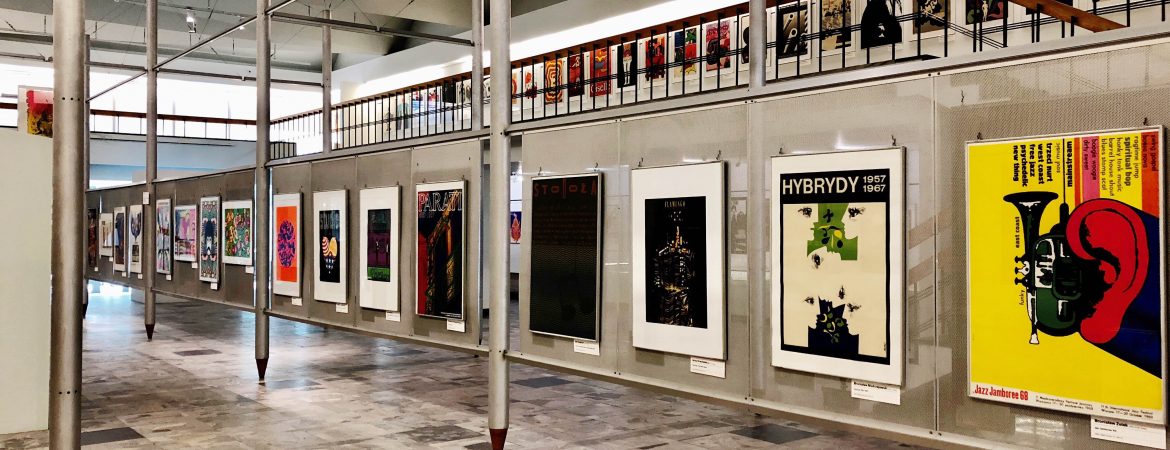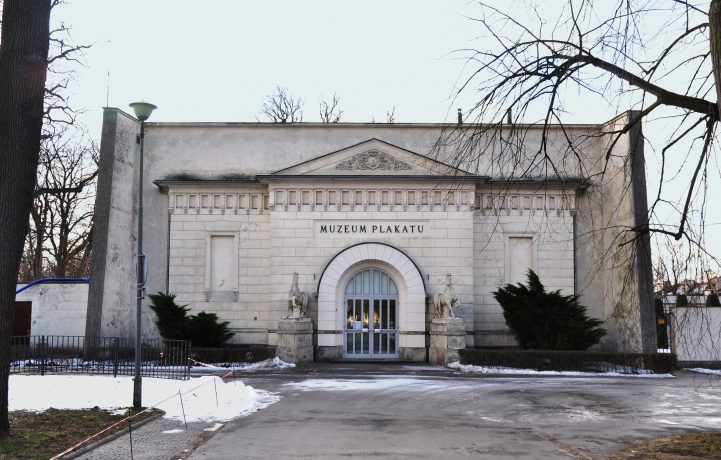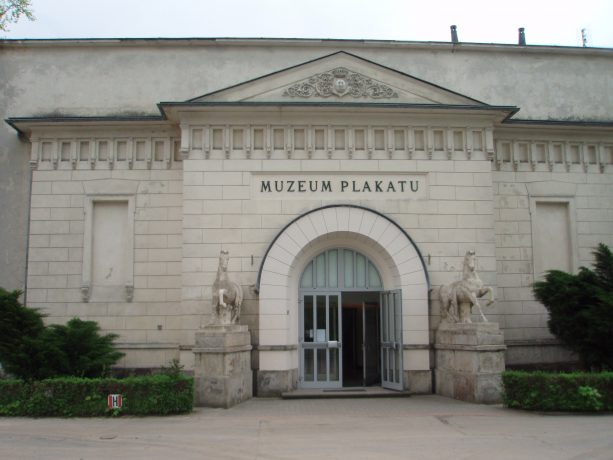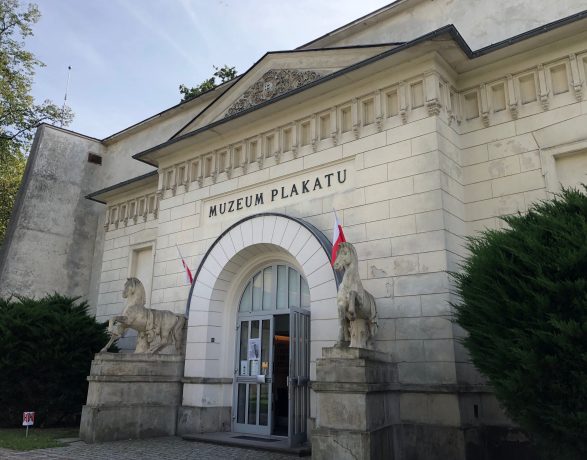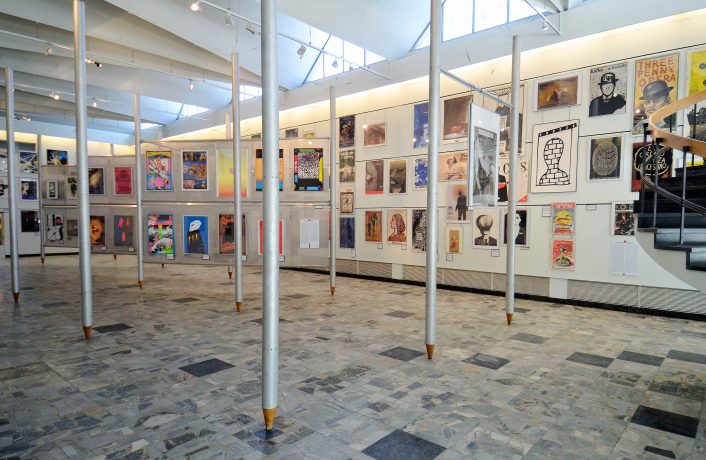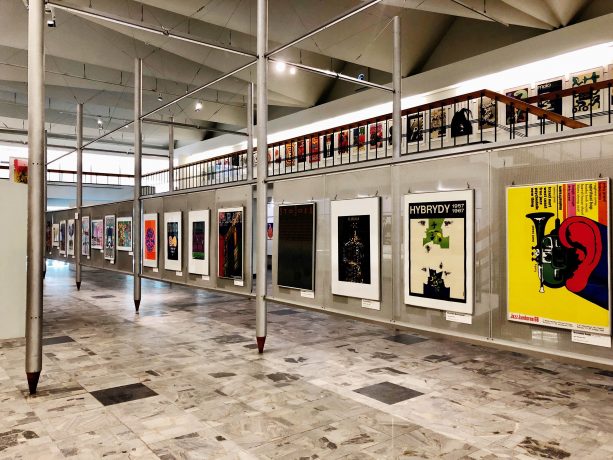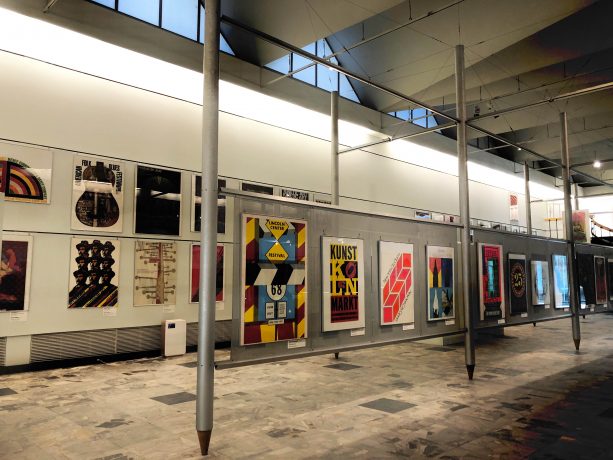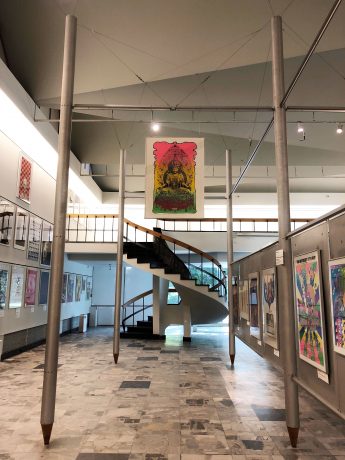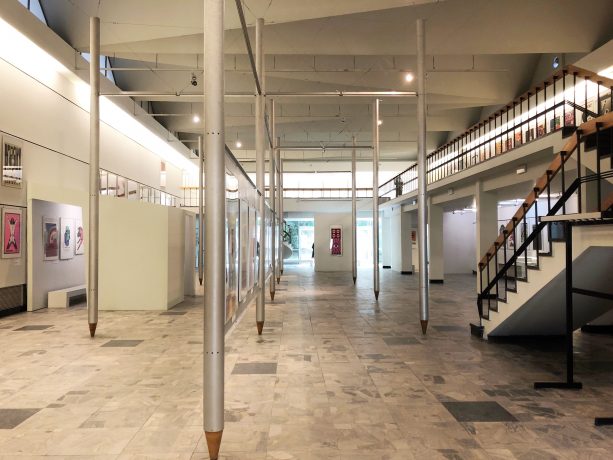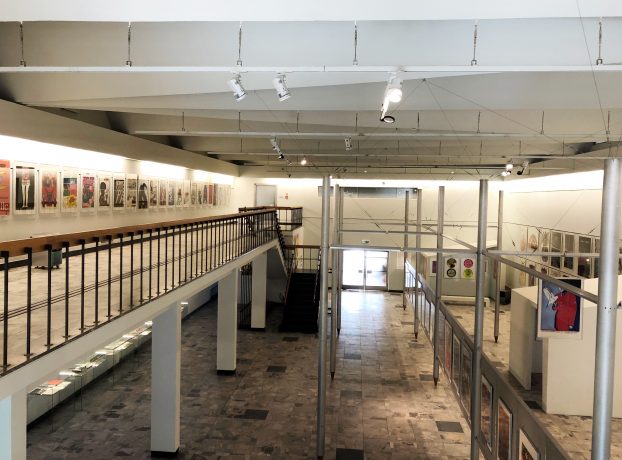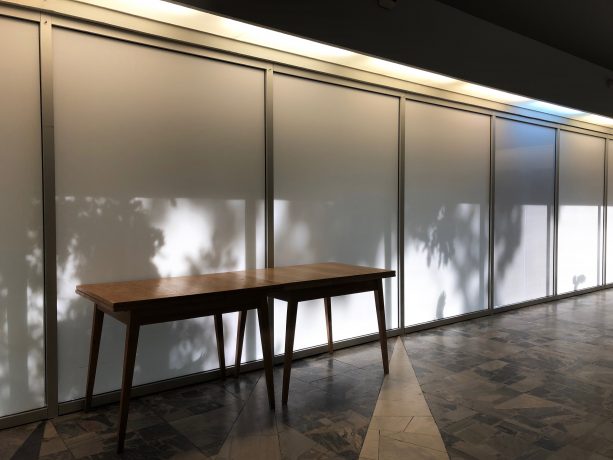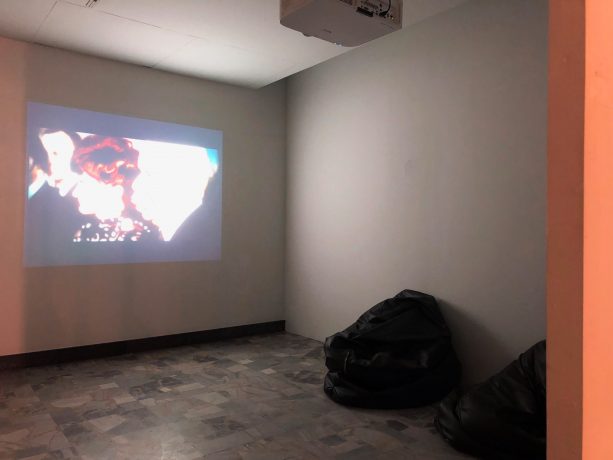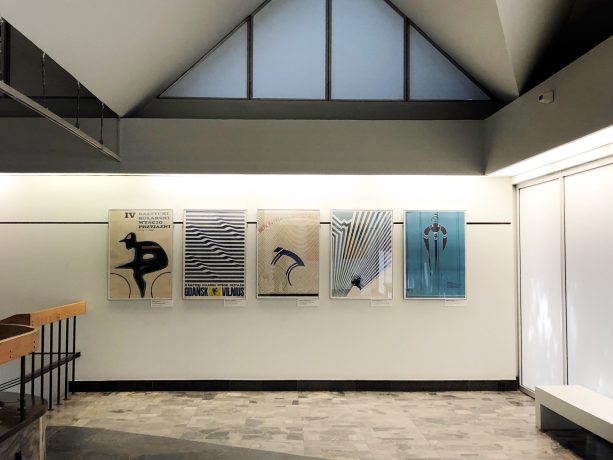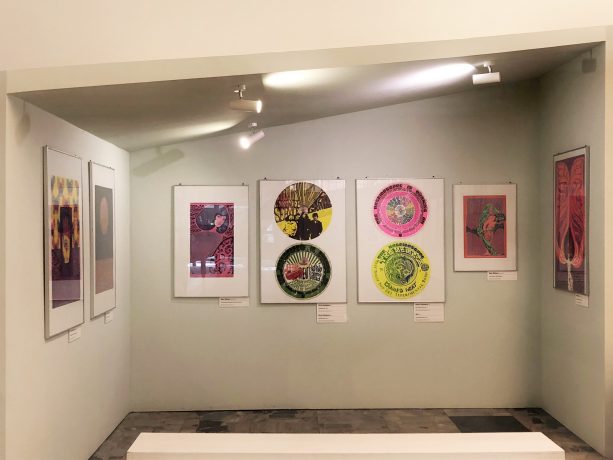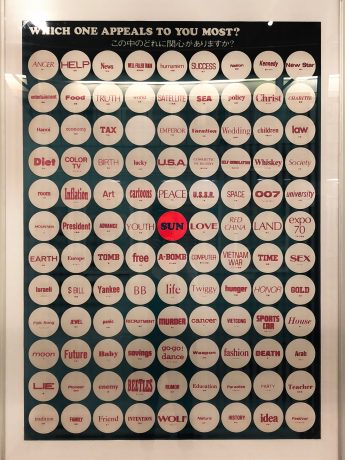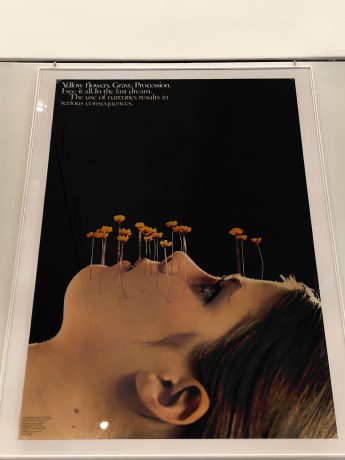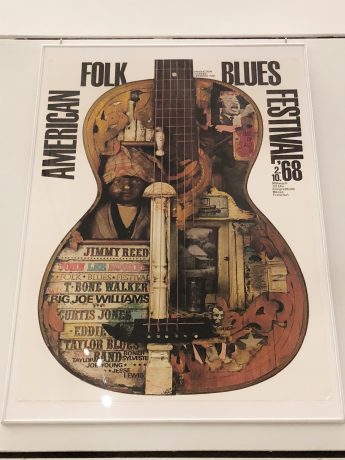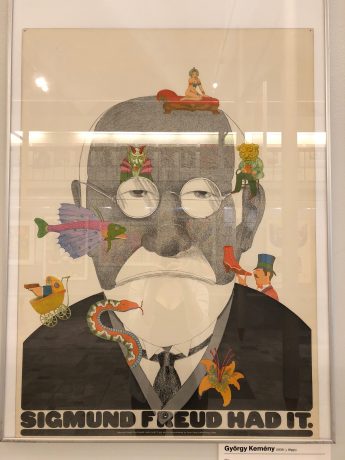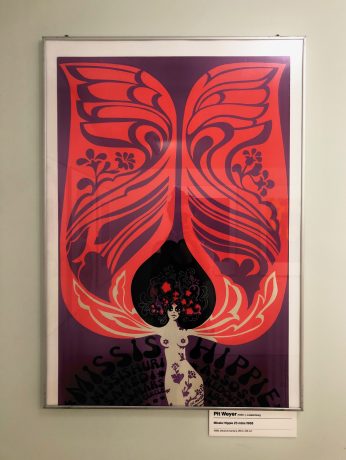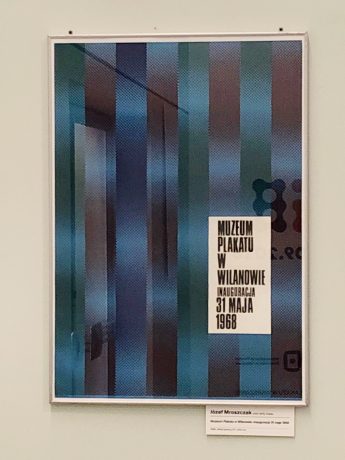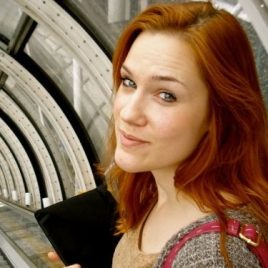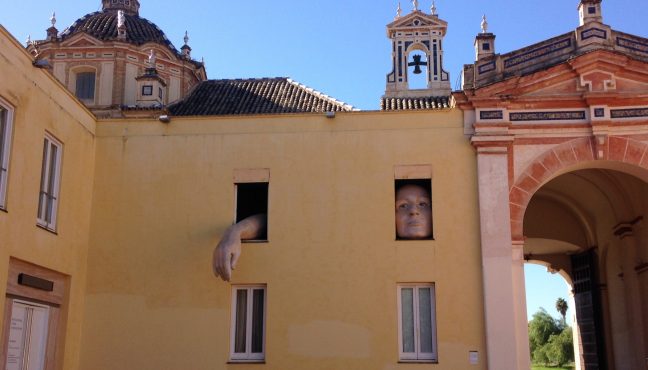Warsaw, the capital of Poland, has once again surprised us with something new in its museum scene. While on the way to visit a beautiful Palace in Wilanow (the Museum of King Jan III Palace which we also wrote about, go and check it out!), we got a little lost and had to take a different route to get to the park. We were fortunate it happened though! We stumbled across the great Poster Museum, which is located just by the main gate to the Palace, hidden among the trees. There was no way we could miss seeing what this place was about. Especially when we discovered that it was the first museum displaying posters in the whole world!
The Poster Museum’s story began with the famous Polish School of Posters, which was formed by the best Polish artists in the 20th century. The name „Polish School of Posters” was created in the 60s and used to describe the group of artists who gained international fame through their graphics; the topics of their work covered cultural, political and social events. The common elements of their work included a very simple, laconic form, the routine use of irony and very innovative lettering. The first interest in Polish posters appeared in 1948, when artist Henryk Tomaszewski received five awards at the International Film Poster Exhibition in Vienna; among the awarded works were posters to iconic films such as „Citizen Kane” and „Odd Man Out.” The Polish School of Posters developed quickly and, in the 50s, was mostly connected to film posters. The peak of creativity started at the end of 1950s and was strongly shaped in the 1960s. In 1966, the first International Poster Biennale happened, which soon turned into the cyclical event of a huge prestige in the world. Jan Lenica, a famous Polish animator and graphic, won the gold medal for his poster of the opera „Wozzeck” by Alban Berg. The poster was described as the „iconic international work of 1960s.” Even Martin Scorsese, the great American director, mentioned in one of his interviews that the artists of Polish School of Posters usually managed to present in their work a synthesis of the whole film. Each success followed another, and the government of the Polish People’s Republic realized that not only were the artists some of the best in the world, but also that their posters were becoming national treasures. Soon after, the decision was made to establish the museum. The next step was to find the perfect location with the right exhibiting conditions.
The location chosen for the museum was the former horse-breaking ground, which is dated to the second half of 19th century. Two architects: Halina Kossuth and Jacek Cydzik, took the challenge of redesigning the space with the goal of converting it into a museum. It was the first building in post-war Poland that was constructed with the specific purpose of holding exhibitions. It was also one of the most representative architectural examples of Polish Modernism. The opening of the museum happened in June 1968 and coincided with the second edition of the International Poster Biennale in Warsaw. It naturally became the meeting place for designers, art critics and artists. Starting in 1993, the Poster Museum took over the duties as the host of the Biennale, held the competition exhibition and became the main organizer of the prestigious event.
The museum is a proud owner of a huge collection featuring around 54,000 works. There are examples of Polish and European posters from the end of 19th century up until today, a collection of the great Polish School of Poster, as well as American, Chinese and Japanese posters. The museum collection also includes the work of artists such as Pablo Picasso, Stasys Eidrigevivius and Andy Warhol.
The Poster Museum organizes temporary exhibitions of notable artists from all over the world. While we were there, it was the last days of the exhibition „+-1968,” a huge display, which was only an extract from the whole museum collection. The exhibition covered a particular year of 20th century – a year when nearly every month was marked with ground-breaking events happening in culture, politics and society. It was a year of protests, pickets and slogans. The propaganda pictures were hanging on the walls, lampposts, doors, everywhere you could stick them. The poster became a main means of the ongoing protest, it was a great tool of expressing the angst and confusion. This exhibition was very powerful not only because it was a reminder of changes history brought in people’s lives, but also because it prevented an overwhelming variety of artworks by numerous famous artists. The posters of 1960s are like a mosaic of various colors, lettering, drawings and forms ranging from pop-art to psychedelia.
The Poster Museum was the first such institution in the whole world and managed to maintain its high standard. It reminds of the greatness of the Polish School of Posters, but above all it is an evidence of power posters can have. Nowadays, we hang posters on the walls of our homes to decorate the interior. In the past, they were screaming, protesting, telling the stories and giving the right argument. Posters were much more than a simple picture printed in big format. Thankfully, all these great works can still be admired and inspire the young artists today.
What more can be said. It’s great to get lost sometimes, especially when you can accidentally discover such a gem! Don’t hesitate and visit the museum before taking a the stroll in the Palace’s gardens. You will surely have food for thought for your walk!
